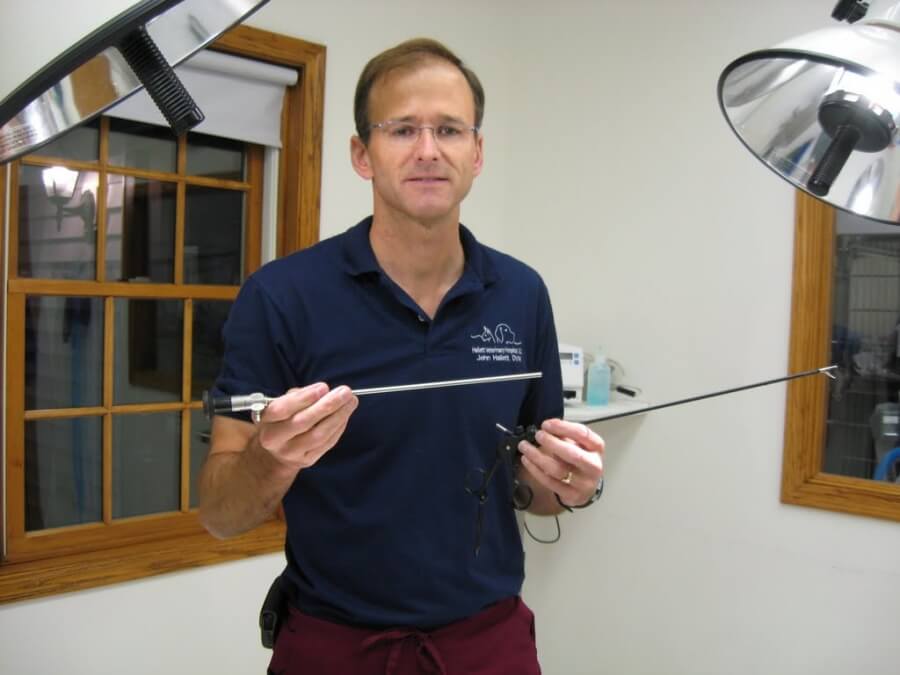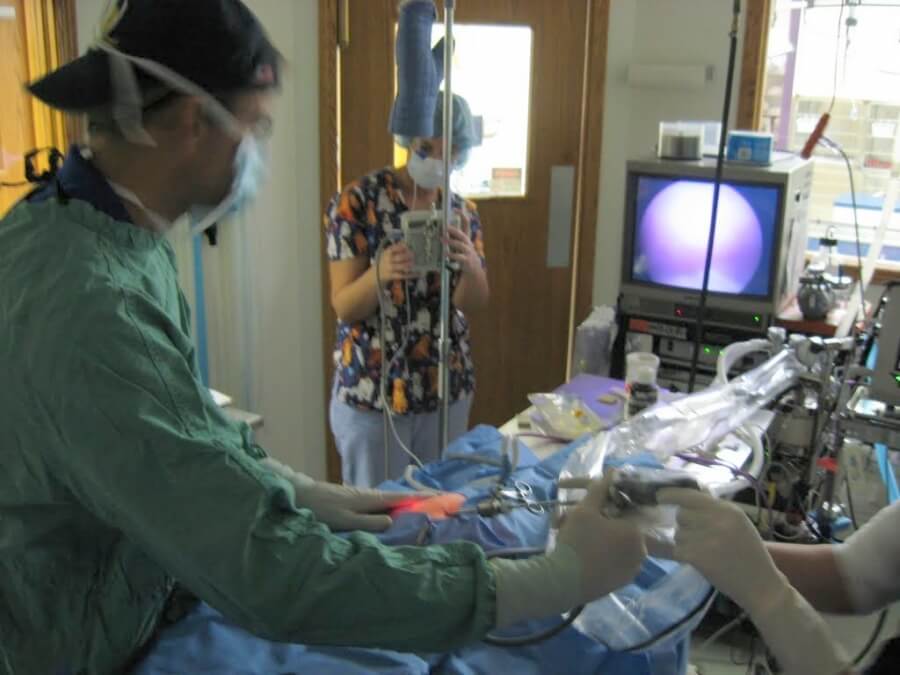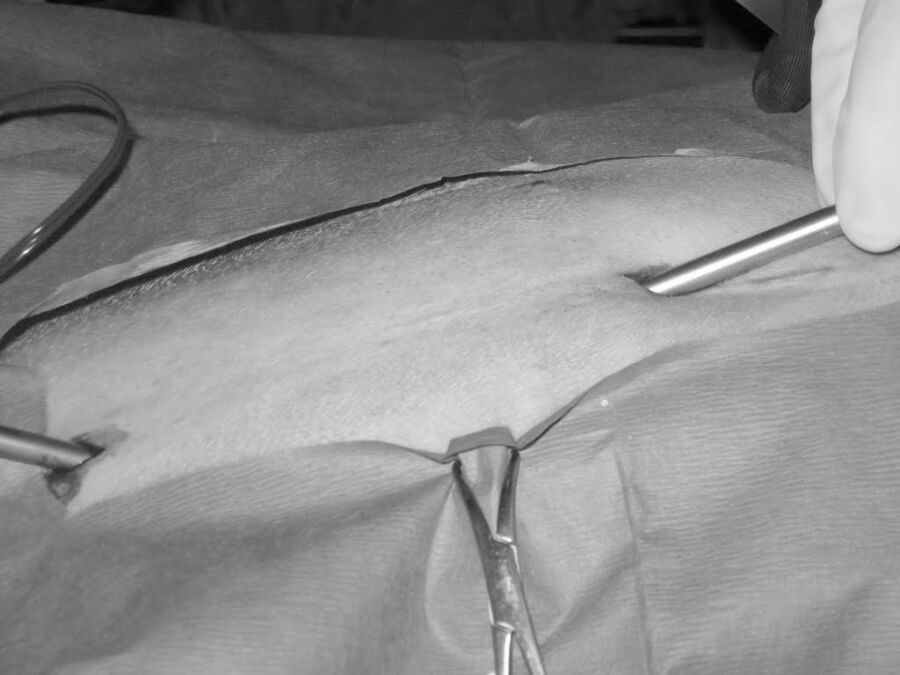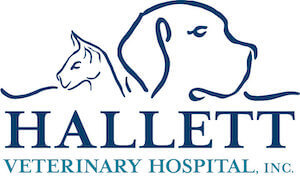
Big or small, laparoscopic surgery can reduce pain and speed recovery.
A laparoscope consists of a telescoping rod and lens system connected to a video camera and light source. The surgeon inserts the laparoscope into the patient through a tiny (less than 1 inch long) incision. The abdomen is then filled with carbon dioxide to create space to work. Additional attachments, such as scissors, retractors, and devices for placing sutures are introduced and manipulated to complete the surgery.
The biggest benefit to laparoscopic surgery is the reduced need for a large incision in the abdomen. In the case of human gall bladder removal, traditional surgeries would create an incision about 8 inches long. With the latest laparoscope, 4 incisions, all less than ½ inch, will suffice to remove the gall bladder. Smaller incisions mean shorter recovery time, shorter hospital stays, and, above all, less pain.

Surgeries that are considered 'routine' by pet owners and veterinarians, such as spaying a female dog or cat, are now considered good candidates for the laparoscope. The advanced technique of laparoscopic assisted surgery enables better visualization and a reduced chance of hemorrhage during a routine spay.

A surgical center in Colorado performed a small study in which 10 dogs were spayed via traditional surgical methods and 10 dogs were spayed with the laparoscope. The results of this study show that 90% of the traditionally spayed dogs needed additional pain relief medications after surgery whereas none of the dogs in the laparoscopic assisted group did. Blood concentrations of cortisol, a good indicator of stress levels, increased only in the traditional group.
Veterinarians are not only using this revolutionary new tool for spays, but as an aid to help diagnose disease. Surgeons are able to biopsy internal organs with laparoscopic surgery and the procedure often requires no more than sedation and a local anesthetic. Previous protocols for biopsies demand general anesthetic and a prolonged recovery time. With some laparoscopic biopsies, the patient is often ready to go home in less than two hours!
Preventing Gastric Torsion (Bloat)
This high tech gadget can actually save lives too! Many large and giant breeds of dogs are prone to a twisting of the stomach commonly known as 'bloat'. The occurrence of this emergency and extremely painful condition can often be prevented by tacking the right side of the stomach to the body wall, preventing rotation. Prior to laparoscopes, veterinarians would perform exploratory surgery, often generating an incision in excess of six or eight inches. The modern laparoscope allows this potentially life-saving procedure to be accomplished through an incision just two inches long.
Contact Hallett Veterinary Hospital for more information on laparoscopic surgery including spay, gastropexy and exploratory surgery.

Laparoscope in action

Laparoscopic ports in place
